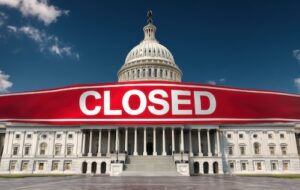Key points:
- If the federal government unravels, higher ed may become collateral damage
- The One Big Beautiful Bill Act: A deep threat to the future of higher education
- How colleges are reimagining inclusion amid political rollbacks
- For more news on federal policy, visit eCN’s Campus Leadership hub
When the federal government shutters its doors, the ripple effects do not stop at the U.S. Capitol–they cascade into every corner of American life. In the world of higher education, a shutdown undercuts critical federal functions that support students, faculty, and institutions. Yet this time, the stakes are higher: the White House, via OMB Director Russell Vought, is pushing through not just furloughs, but mass firings, and directing agencies to reimagine federal governance in ways that challenge congressional control over spending. The combination of a shuttered Department of Education and a presidential war on federal oversight is a toxic mix that threatens to destabilize student aid, research systems, civil rights enforcement, and institutional viability.
When Congress failed to pass an appropriations bill by October 1, the government entered a partial shutdown, triggering widespread furloughs across federal agencies. Historically, higher education institutions have weathered short-term shutdowns with limited disruption, because core functions like Pell Grants and student loan disbursements are funded via mandatory appropriations already in place. Yet this time, the difference is doctrinal: The current administration is treating the shutdown as an opportunity to remake the federal apparatus itself, and that transformation could inflict lasting damage to higher education’s infrastructure.
The White House’s OMB has instructed agencies to prepare “reduction in force” (RIF) plans targeting positions deemed “not consistent with the President’s priorities.” These plans go far beyond traditional furloughs–they entail permanent elimination of positions and potential terminations rather than temporary unpaid leave. Labor unions have already sued the administration, alleging that these directives violate the Antideficiency Act and unlawfully co-opt federal agencies in a political fight. If institutions thought the agency that distributes federal student aid was static, those assumptions may now prove dangerously naive.
At the Department of Education (ED), the fear is not hypothetical. The agency’s contingency plan anticipates furloughing roughly 87 percent of its workforce during a lapse in funding. Already this year, the ED has been gutted: Over 1,300 staff have been laid off, including in the Office for Civil Rights (OCR) and the Federal Student Aid (FSA) offices. The Supreme Court lifted an injunction that had temporarily blocked earlier mass layoff efforts, clearing the way for deeper structural changes to the department. Under the new shutdown regime, ED may hold existing programs afloat, but will likely suspend new grants, regulatory activity, technical assistance, and civil rights enforcement.
For students, the short-term picture is ambiguous. Pell Grants and federal student loan disbursements generally continue during shutdowns. Still, students applying for aid, loan forgiveness, or income-driven repayment changes may face fixed delays due to diminished staffing. The FAFSA process, already overhauled and slowed by IRS data-sharing complexities, could be awash in additional backlog if IRS operations falter. Work-study funding, highly sensitive to annual appropriations, stands at higher risk, meaning some campuses may exhaust funds before the academic year ends. International students may face visa or status delays, as immigration services across DHS may not process nonexempt applications during a shutdown.
Moreover, a shift in regulatory oversight is underway. Vought’s OMB guidance reportedly includes instructions to rewrite rules governing federal grants, potentially constricting accountability, reducing federal leverage, and limiting congressional oversight. Such maneuvers push federal authority toward executive discretion, weakening oversight by Congress over spending.
In sum, what looks like a routine appropriation impasse hides a deeper ambition: to use a shutdown as a lever to dismantle institutional structures, reassign federal functions, and bypass congressional checks. The stakes for students, researchers, and academic institutions are immediate and existential. The partial shutdown is already hobbling ED’s capacity; mass firings and regulatory rewrites risk permanently destabilizing federal higher education infrastructure.
Higher education cannot afford naïveté. Institutions should immediately inventory dependencies on ED services, financial aid pipelines, compliance obligations, and research funding patterns. Administrators must develop contingency plans for disrupted operations, communicate transparently with students and faculty, and coordinate with states to shore up protections. Congress and the courts, too, must reassert their constitutional roles–federal appropriations, oversight, and checks on executive overreach remain nondelegable.
This moment is a test of resolve: If the federal government unravels, higher education may become collateral damage. The academic community must act with urgency to preserve the scaffolding that supports research, student access, and institutional stability. The long shadow of this shutdown–and its use as a vehicle for transformation–should alarm those who believe in the role of federal partnership in higher education.
- The quiet collapse: What the partial U.S. government shutdown means for higher education - October 17, 2025
- Ethics besieged in higher education–and how AI can fire back - October 6, 2025
- Democracy’s future and the fate of higher education - September 19, 2025
